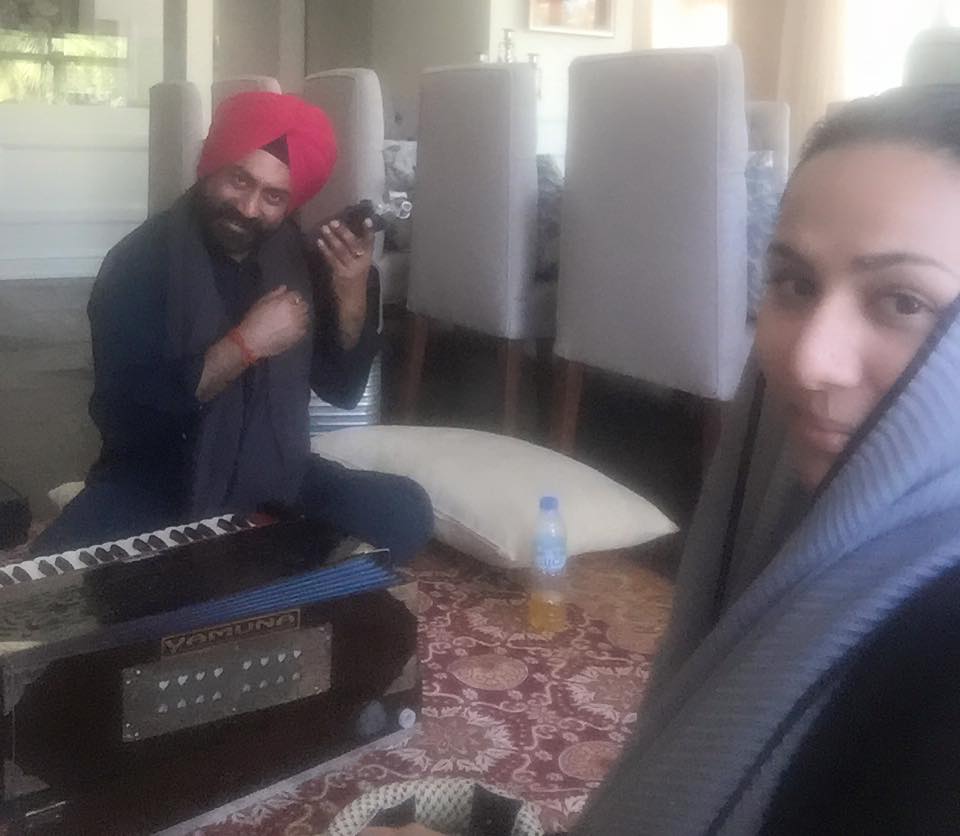
Last January, as 2016’s new light dawned, I swallow-dived straight into my next musical imagining, head and heart first. At the start of the month my friend and collaborator Talvin Singh came to Dubai for four days to work with me on my new EP. Out of six I have recently been working on, Talvin and I selected four tracks to include on the release. We discussed our shared artistic vision and creative goals for the project.
The concept for the EP is to recover and present anew the magical, mystical instruments of ancient Sikh music. In contemporary kirtan practice, solely the voice, tabla and harmonium are typically used. I have been singing kirtan my whole life and yet I have never performed praise-song accompanied by a taus or dilruba. Why?
The use of a wider array of musical instruments in kirtan has fallen out of practice due to social convention and economic factors. The harmonium first came to India in the 1700s, introduced by European missionaries and gained popularity quickly amongst North Indian musicians who liked the portable nature of the instrument. The hand-pumped version of the organ also didn’t require foot-pedals. This meant Indian musicians who conventionally are seated on the floor during performances could continue to be so. The fast adoption of the harmonium into mainstream kirtan practice led to lesser performances and use of older, traditional accompanying instruments. The after-effect of this process has meant the harmonium is ever dominant today.
Upon researching this topic I was stunned to learn the taus, a bowed stringed instrument from northern India, was actually invented by Guru Hargobind Ji (the sixth Sikh guru). I was shocked that such a significant piece of musical history has slipped into near obscurity in the international Sikh musical community. The dilruba, originally designed to be a lighter version of the heavy taus, is also said by some to have been devised by Guru Gobind Singh Ji.
After exploring the topic with Talvin we both decided to trace the roots of these powerful instruments and find those still accompanying kirtan with them today in rural Punjab and Northern India. Talvin is in the Punjab as I write, collaborating and conversing with local musicians whom we will record and feature on the forthcoming EP. My melodies will be matched and mixed with the sounds of these recordings. My passion for this project stems from my respect and love for the kirtan tradition and also from a wish to pass down a full and accurate history of the discipline to my son and the next generation as a whole. We as members of the modern day Sikh society must act to preserve and protect our precious, sacred shared history.
As always when stretching at the seams of a most-loved tradition some of my work re-setting and interpreting kirtan with these instruments may be met with criticism from conservative corners. I entirely honour and value these views, but upon probing the musicological ethics of my work: every-time I return to the example set by Guru Nanak who used to perform kirtan to the melodies of well-known folk music tunes rather than solely the traditional settings. By this gracious illustration, I feel secure in my belief that kirtan is a message which can be honourably delivered by the means in which your audience are best poised to receive it.
The subject of these instruments, almost lost to kirtan, has been so involving and engulfing, that Talvin and I have decided to also record a documentary tracing our work. Check back here for more updates on the production of this soon.
